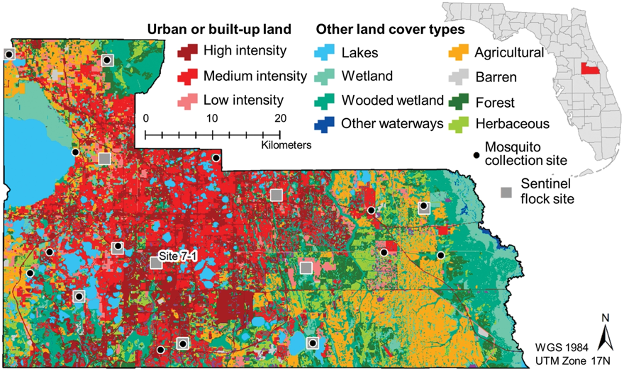
MUNDIS, RYAN – Spatiotemporal Environmental Drivers of Eastern Equine Encephalitis Virus in Central Florida: Towards a Predictive Model for a Lethal Disease
Article first published online: 12 August 2022
DOI: https://doi.org/10.1093/jme/tjac113
ABSTRACT: Eastern equine encephalitis virus (EEEV) is a mosquito-borne virus that affects humans and horses, with a high case fatality rate in both species. The virus can be transmitted by several mosquito species and maintained in multiple reservoir hosts, making EEEV dynamics difficult to anticipate. In this study, we identified spatial and temporal factors that precede EEEV detection using sentinel chicken surveillance data from Orange County, Florida, from 2003 to 2017. We first examined the land cover and mosquito species composition associated with sentinel chicken sites. We then fit distributed lag nonlinear models of EEEV detection at the county scale, using monthly temperature, precipitation, and Southern Oscillation Index values, and at the sentinel flock-scale, using remotely sensed temperature and wetness indicators. We found positive associations between the percent wooded wetlands and the count of EEEV detections. We found Culiseta melanura (Diptera: Culicidae) were more abundant at positive sites in winter and summer, but Coquillettidia perturbans(Walker) were more abundant at positive sites in spring. In the county-wide model, precipitation, temperature, and Southern Oscillation Index values at lags of two, nine, and twelve months were significant, respectively, while temperature and wetness were significant at lags of eight and six months in the flock-specific models.
Read the full publication at Journal of Medical Entomology.